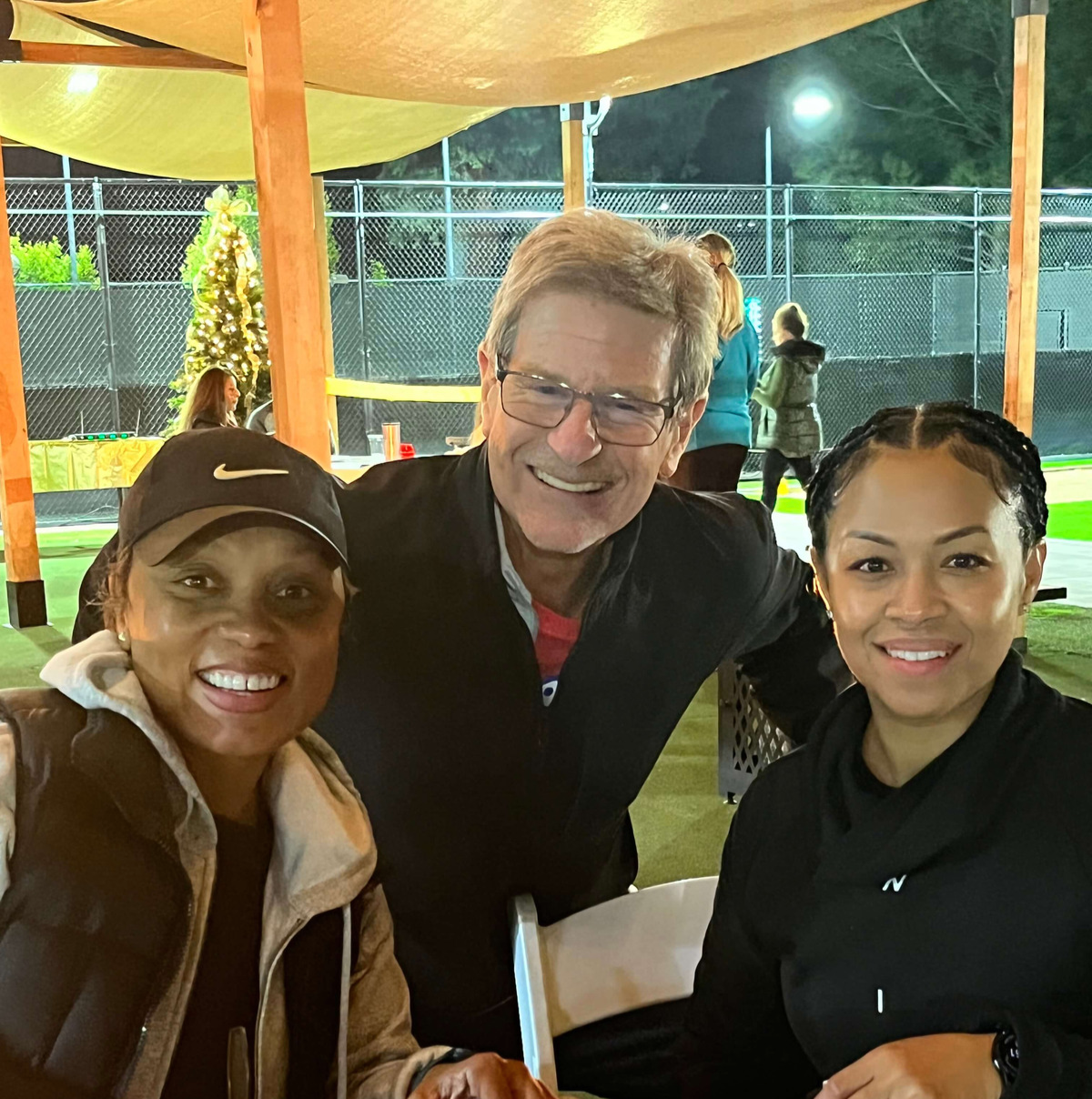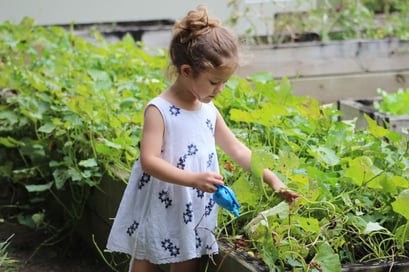9 Best steps to shed stress (Inspiration from Blue Zones)
January 11th, 2023 | 6 min. read
By Jen Azevedo

Juggling kids, career, and household responsibilities are tough. The days are long, and the workload is staggering. When you have added factors of financial strain, relationship uncertainty, or health issues, you face worrying, anxiety, and STRESS.
Unfortunately, stress is not something any of us can get rid of. But instead of letting stress dominate our lives, we can learn how to manage it better and support ourselves during tough times.
The Blue Zones of the world are regions with healthy, long-living senior populations. It was discovered that the communities in the Blue Zones have nine features in common.
From these nine features are clues about how all of us can live with less stress and how to have better coping mechanisms for when we experience stress.
The Paseo Club is a social club in Santa Clarita that supports members in fitness and health — physical and mental. We have members of all ages that are looking to improve their well-being.
Since mental health is such a critical topic to our community, we wrote this article to explore how Blue Zones can be both an inspiration and a blueprint to shed stress. We will share with you where the Blue Zones are, what steps the citizens of these regions take to mitigate their stress levels, and what you can do to lower yours.
What is a Blue Zone?
According to the National Institute on Health, “what began as a National Geographic expedition, led by Dan Buettner, evolved into the discovery of places around the world where people consistently live over 100 years old, (later) dubbed the Blue Zones.”
Why are Blue Zones important?
As we seek to understand how to live a long healthy life, we can now turn to the communities around the world with high percentages of residents that have the answers.
By looking at the commonalities of these elders' lifestyles and nutrition, we can learn what to employ ourselves, thereby unlocking the mystery of how to lower stress and age well.
Where are the Blue Zones located?
There are five original Blue Zones in the world.
- Ikaria, Greece
- Sardinia, Italy
- Okinawa, Japan
- Nicoya, Costa Rica
- Loma Linda, California
 How are stress levels impacted by living in a Blue Zone?
How are stress levels impacted by living in a Blue Zone?
Several factors shape stress levels, but often they are based on these categories:
- Financial
- Life events
- Physiological
- Organizational
- Social/relational
- Lifestyle choices
- Physical environment
When any of these stressors are activated, we can feel panic, fatigue, overwhelmed, anger, and a slew of other feelings.
Unfortunately, it is impossible to live life without stress. BUT you can learn to mitigate stressors and put systems in place to help you manage stress.
By following the nine factors practiced in the Blue Zones, you can lessen stress levels and live a better, happier, and longer life. These values inspire to make choices that add enrichment, support, and longevity to our lives.
What are the nine factors of the Blue Zones, and how can we integrate them into our lives?
Researchers found nine specific factors that all of the Blue Zone communities possess. They encompass activity, nutrition, and social aspects of their lives.
1. Have a sense of purpose
The Nicoyans in Costa Rica call this a “plan de vida'' — a plan for your life. What greater meaning do you want for yourself?
Most of us cannot quit work and travel the world or open a hospital for the underprivileged and become the next Mother Theresa, but there are small steps that can be made.
Consider engaging in a creative outlet such as art, music, or writing. Perhaps volunteer work with a local charity would give you purpose. Brainstorm ideas and see what is possible to add to your life, even if it is just an hour or two per week.
2. Eat modest portions
Depending on how great your love of food is, this can be a tough one for many of us. But in Okinawa, they eat to 80% fullness. The concept is that you are sated enough to last until the next meal, and maintain a healthy weight.
This practice can be implemented at every meal and snack and requires nothing more than a bit of diligence.
3. Reduce and manage stress
Chronic stress leads to inflammation and is associated with every major disease — diabetes, heart disease, obesity, and more. It also lowers overall immunity.
If there is one area of life people need to work on, it is stress.
The founder of Blue Zone calls this “downshifting.” Downshifting is the process of creating consistent support to help you manage stress. There are many ways to downshift:
- Exercise
- Take a nap
- Meditate or pray
- Spend time in nature
- Spend time with friends
Although we cannot completely remove stress from our lives, we can employ these steps to rebalance and revitalize when we are burdened or overwhelmed.
4. Partake in happy hour
In the mountainous region of Sardinia, elders gather with friends, pull out a bottle of the local Cannonau wine, and they enjoy a glass or two.
This ritual is done most days of the week, and is considered an integral part of their culture.
In fact, all the Blue Zone communities have a ritual similar to this, except for the Seventh-Day Adventist community of Loma Linda.
Research shows that drinkers outlive non-drinkers. But this does not mean you abstain all week and then have 7-14 glasses of wine on the weekend! The key is consistency and moderation.
5. Engage in natural movement
No one will tell you to quit going to the gym, playing tennis, or doing Pilates. But it is encouraged to engage in natural movement as well.

Natural movement is a movement based on necessity (walking the dog, weeding the garden) and low-tech (biking to work, sweeping the house).
Examples of natural movement are:
- Biking
- Walking
- Swimming
- Gardening
- Climbing trees
- Doing housework
Movement is a great way to reduce stress — and the efficacy increases when you can do it with a friend.
6. Belong to a spiritual community
Almost all of the elders who live in Blue Zone communities belong to a center of faith. The denominations vary, but gathering regularly with others for spiritual observance is a key feature of their lives.
Spiritual communities (formal or informal) facilitate social connections. They offer infrastructure for support when you need it, an opportunity to volunteer when others need you, and a consistent time in the week to focus on spiritual and personal growth.
These experiences lessen stress and increase a sense of belonging and connection with others.
7. Prioritize family, including elders
Multigenerational living is often considered a thing of the past. But Blue Zone elders tend to live nearby or in the same home as their children, grandchildren, and great-grandchildren.
This arrangement not only increases their lifespan but reduces the mortality and morbidity of the children in the home too.
Families in the US tend to live far apart from family members, so prioritizing family often looks different. Some ways to bring priority to family are:
- Family rituals — game nights, making a meal together, hikes on Sundays, etc.
- Adopt friends or neighbors as surrogate grandparents/aunts/uncles and spend time with them
- Create consistent in-person and Zoom dates with family who live out of the area
Spending time with family can help create a support system and reduce depression, anxiety, and mental illness.
8. Eat a lot of veggies and legumes (Plant slant)
Eating well is a significant component of the Blue Zone. Elders eat meat in moderation (or not at all for Seventh Day Adventists).
They eat sizable quantities of vegetables, especially leafy greens, and legumes.
What the people of these communities are not eating are large volumes of white flour, sugar, and processed fats.
Highly processed food and simple carbohydrates can create a sugar level rollercoaster, spiking your energy and then leading to a crash and the resulting fatigue. Eating poorly can exacerbate stress.
Alternately, eating well helps manage stress and provides the extra energy needed to cope with stressful events. Research also suggests that certain foods such as omega-3 and vegetables may help to regulate cortisol levels.
The biggest obstacle to eating a balanced diet is that it is labor intensive. Eating healthy can mean pre-planning to have the right ingredients in the house so you can cook a few simple (but tasty) meals that can be prepared quickly and provide leftovers for lunch tomorrow.
Dinner ideas are:
- Chili with ground turkey and salad
- Salmon with sauteed kale and baked sweet potato or squash
- Stir-fried vegetables with pork or beef over rice
- Dinner salad of mixed vegetables, cooked beans, eggs, and a bit of fish or poultry
9. Surround yourself with friends who live a healthy lifestyle
Blue Zone elders are famous for their social hangouts. Many of these friendships last decades or even lifetimes.
If you surround yourself with people who are not living a healthy lifestyle, it affects you and your decisions.
Inversely, having friends who value good health, being active, and eating well supports and buoys your goals.
Friends are a critical part of mitigating stress and supporting mental health.
Nurture old friendships by making time for a walk (natural movement), a healthy meal (plant slant), or a glass of wine (happy hour).
New friends are at places of worship, your local fitness center, or a social club.
Taking the first steps to Blue Zone living
Modern living can be a grind. There are times it feels as if you can hardly come up for air as you rush from one obligation to another.
By turning to the Blue Zone communities, we can learn from them what can be done to change our lives, minimizing the chance of suffering from disease and poor mental and physical health.
Although you likely cannot pack up and head to Greece to become an olive farmer, there are small but concrete steps you can take to lower stress, increase the quality of your life, and ultimately add years to your lifespan.
The Paseo Club is a social club that offers a home away from home to members. There are dozens of fitness options available — tennis, pickleball, swimming, and over 60 group fitness classes each week.
But that is not all! Paseo also has a spa on-site for relaxation and rejuvenation, a cafe for snacks or meals, and social gatherings every week from Wine Down Wednesdays to Member Mixers.
If you are looking to join a community where fitness and social connections are enjoyed equally, then the Paseo Club is the place for you. Schedule a tour today to check out the eight-acre grounds.
Check out these three articles to learn about health and wellness and the Paseo Club.
- The 8 best relaxation techniques
- The 6 ways fitness helps your brain
- 7 things to love about Wine Down Wednesday
Jen Azevedo is a tennis professional, pickleball professional, personal trainer, group exercise instructor, and the general manager of the Paseo Club. She loves the community at the Paseo Club and that it is also a safe and fun place for her daughter. Jen’s favorite activities are joining her tribe for trail races or her partners for tennis matches. Occasionally Jen slows down to relax with a book — she reads over 100 a year!

